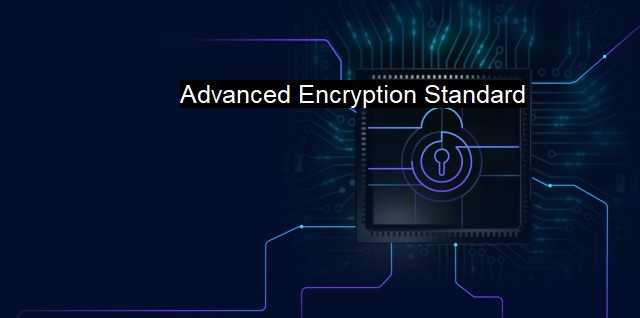What is Advanced Encryption Standard?
Ensuring Data Confidentiality with Advanced Encryption Standards (AES): A Critical Tool in Cybersecurity Protection
The Advanced Encryption Standard (AES) is a specification for the encryption of electronic data. Established by the U.S. National Institute of Standards and Technology (NIST) in 2001, it is a symmetric-key algorithm, meaning the same key is used for both encrypting and decrypting the data.AES is used worldwide due to its favorable features in the realm of cybersecurity and antivirus. it has the dual capacities to maintain information confidentiality and protect against unauthorized data access by converting plaintext information into an unreadable form until it is decrypted using a key.
Key sizes form a pivotal factor in the strength of encryption. They are analogous to the combinations in an old lock; the more combinations there are, the harder it is to break the encryption. AES offers flexible key lengths of 128, 192, or 256 bits, depending on the level of security required.
The process of AES encryption is broken down into various stages based on data blocks of 128 bits in size. These stages encompass initial-round transformations that involve substitutions, permutations, and mixing processes standardized as SubBytes, ShiftRows, MixColumns, and an additional AddRoundKey stage. There are repeated rounds depending on the key size used in these processes. This complexity contributes to the encryption robustness, deterring attacks related to key decryption.
AES plays a significant role in protecting sensitive data within networks, wireless communications, governmental systems, or any environment using encryption for data privacy and integrity. it serves as one of the most efficient encryption standards to resist various possible attacks such as brute force, known plaintext, chosen plaintext, or statistical attacks.
In antivirus applications, the need for AES exponentially increases. AES supports encryption requirements of the quarantine folder, which stores suspicious files temporarily, awaiting investigation or action execution. Encrypting these folders avoids unauthorized personnel from possibly accessing and releasing files that might expose the system to vulnerabilities.
Network behavior analysis in antivirus systems operating under encrypted network traffic calls for robust encryption standards like AES. This encryption helps in unmasking malware attacks that hide behind SSL/TSL encrypted channels to evade intrusion detection and prevention systems.
For secure remote connections via devices, ensuring device identity, data confidentiality, and blocking malware entry, vetted encryption standards like AES form the cornerstone. Besides, with the uptick in cloud-storage adoption, cloud providers are resorting to AES for protecting stored data from possible cyber threats.
Looking at updates and backups, antivirus solutions back-up predefined sensitive data and update antivirus definitions using encrypted data transmission, leveraging AES encryption advantages. Data breach attempts during these critical processes can be bypassed using AES.
AES's stronghold in cybersecurity is testament to its effective, versatile, and secure nature. The standard, although relatively ancient in cyberspace terms, continues to play a pertinent role in the broader arena of cybersecurity and antivirus applications.
Streamlined by effective coding, accelerated by hardware and software technological advances, and invigorated by broad-based acceptance, the AES algorithm remains resilient amidst evolving cyber threats. This resiliency makes it a reference in its field, and an important component of our networked, digital lives. Without it, the security of sensitive data systems would be more exposed to potential breaches, increasing risks for individuals and organizations.

Advanced Encryption Standard FAQs
What is Advanced Encryption Standard (AES)?
Advanced Encryption Standard (AES) is a highly secure encryption algorithm that is widely used in cybersecurity to protect sensitive data from unauthorized access. It is considered one of the most secure encryption algorithms available today.How does AES work?
AES works by using a block cipher that encrypts data in fixed-size blocks of 128 bits. It uses a symmetric key, which means that the same key is used for both encryption and decryption. The key length can be either 128, 192, or 256 bits, depending on the level of security required. AES encrypts the data using a substitution-permutation network, which makes it extremely difficult for hackers to decrypt the data.What are the benefits of using AES?
The main benefit of using AES is that it provides a high level of security for sensitive data. It is also highly efficient, which means that it can encrypt and decrypt data quickly without affecting performance. Additionally, AES is a widely recognized and trusted encryption standard, which means that it is supported by many software applications and hardware devices.Can AES be cracked by hackers?
AES is considered one of the most secure encryption algorithms available today, and it is highly unlikely that it can be cracked by hackers using current technology. However, like any encryption algorithm, it is not completely foolproof, and there is always a possibility that new vulnerabilities may be discovered in the future. To ensure maximum security, it is recommended to use a strong, unique key and to follow best practices for key management and data protection.| | A | | | B | | | C | | | D | | | E | | | F | | | G | | | H | | | I | | | J | | | K | | | L | | | M | |
| | N | | | O | | | P | | | Q | | | R | | | S | | | T | | | U | | | V | | | W | | | X | | | Y | | | Z | |
| | 1 | | | 2 | | | 3 | | | 4 | | | 7 | | | 8 | | |||||||